15m Or More Cars In China. How It Affects Peak Oil And Global Warming

It’s definitely official now. The last word in Chinese vehicle sales has the China Association of Automobile Manufacturers (CAAM,) and the CAAM has spoken. Vehicle sales in China last year rose 46.2 percent to 13.64m units. This is not surprising, but it is nonetheless reassuring that the 13.6m number TTAC had reported last week was only 40,000 short. It is equally official that China is the world’s largest auto market, ahead of the U.S.A. by 3m units, more or less.
Vehicle sales in December alone rose 91.7 percent from a year earlier to 1.41m units in China, the CAAM said. Passenger car sales jumped 88.7 percent in the last month to 1.1m units. Full-year 2009 China passenger car sales are up 52.9 percent in 2009 to 10.3m. If passenger cars alone would count, then the truck and SUV happy USA would look like a 3rd world country: According to Automotive News [sub], only 5.7m new “passenger cars” drove off U.S. dealers’ lots in 2009, slightly more than half of what the Chinese bought.
Will the sales boom continue in 2010? Not as mad as in 2009, expects the CAAM. The manufacturers association expects growth to continue at a more moderate pace of 10 percent. This would mean 1.36m units in additional sales, or a total of a little less than 15m. Merrill Lynch is a little more bullish and thinks that the Chinese market will grow to 15.5 million vehicles this year, the Nikkei [sub] reports. A horrific thought to those who are scared that Chinese will use all our oil, and that melting polar caps will destroy the value of our waterfront properties. Wait, it’s getting worse.
China is known for low-balling their projections. By the end of 2008, the CAAM had projected a moderate rise of 5 percent for 2009. A little later, the target was revised to 10m cars for the year. Double, sometimes triple digit growth rates put that target in the round file.
Dong Yang, executive vice president and secretary general of the China CAAM pointed out that auto sales in China over the past 15 years have grown an average 16.7 percent annually. In the worst times of carmageddon, 2008 sales were still up 6.7 percent from a year earlier. Previously, Rao Da, general secretary of the China Passenger Car Association, had said that auto sales in 2010 could grow by another 20 percent so long as China’s economic recovery continues and oil prices stay stable. The CAAM plays it safe and projects 10 percent.
Anyway you slice it, China should close out 2010 with 15m, 16m, or more cars sold.
Since comments about peak oil and pollution are being cued up as I type this, some items to remember:
Air quality: The faster smoke belching vehicles are replaced by modern cars, the better for the environment. Beijing doesn’t allow anything less than Euro 4 into the city, with amazing results for the air quality. China-wide, Euro 4 will go into effect this year. To get the polluters off the road, China is stepping up its Cash for Clunkers program in 2010, and offers between US$733 and $2635 to those who retire their old cars. Increasingly, high polluters will be banned from big cities. Before Beijing was declared off-limits to high-emission vehicles (brand marked by a yellow tag,) they were responsible for 50 percent of the pollution.
Peak oil: According to Edmunds, China is targeting a fleetwide average of 42.2 mpg by 2015. Edmunds: “That’s almost 19 percent more than the 35.5 mpg corporate average fuel economy by 2016 that President Obama announced for the U.S.” Fuel economy for China’s new-car fleet (including SUVs and minivans) already averages 36.8 miles per gallon. In the U.S., the present CAFE standard is 27.5 mpg for cars, 23.1 mpg for trucks.
Now who’s the biggest oinker of ’em all?

Bertel Schmitt comes back to journalism after taking a 35 year break in advertising and marketing. He ran and owned advertising agencies in Duesseldorf, Germany, and New York City. Volkswagen A.G. was Bertel's most important corporate account. Schmitt's advertising and marketing career touched many corners of the industry with a special focus on automotive products and services. Since 2004, he lives in Japan and China with his wife <a href="http://www.tomokoandbertel.com"> Tomoko </a>. Bertel Schmitt is a founding board member of the <a href="http://www.offshoresuperseries.com"> Offshore Super Series </a>, an American offshore powerboat racing organization. He is co-owner of the racing team Typhoon.
More by Bertel Schmitt
Latest Car Reviews
Read moreLatest Product Reviews
Read moreRecent Comments
- Kwik_Shift_Pro4X Thankfully I don't have to deal with GDI issues in my Frontier. These cleaners should do well for me if I win.
- Theflyersfan Serious answer time...Honda used to stand for excellence in auto engineering. Their first main claim to fame was the CVCC (we don't need a catalytic converter!) engine and it sent from there. Their suspensions, their VTEC engines, slick manual transmissions, even a stowing minivan seat, all theirs. But I think they've been coasting a bit lately. Yes, the Civic Type-R has a powerful small engine, but the Honda of old would have found a way to get more revs out of it and make it feel like an i-VTEC engine of old instead of any old turbo engine that can be found in a multitude of performance small cars. Their 1.5L turbo-4...well...have they ever figured out the oil dilution problems? Very un-Honda-like. Paint issues that still linger. Cheaper feeling interior trim. All things that fly in the face of what Honda once was. The only thing that they seem to have kept have been the sales staff that treat you with utter contempt for daring to walk into their inner sanctum and wanting a deal on something that isn't a bare-bones CR-V. So Honda, beat the rest of your Japanese and Korean rivals, and plug-in hybridize everything. If you want a relatively (in an engineering way) easy way to get ahead of the curve, raise the CAFE score, and have a major point to advertise, and be able to sell to those who can't plug in easily, sell them on something that will get, for example, 35% better mileage, plug in when you get a chance, and drives like a Honda. Bring back some of the engineering skills that Honda once stood for. And then start introducing a portfolio of EVs once people are more comfortable with the idea of plugging in. People seeing that they can easily use an EV for their daily errands with the gas engine never starting will eventually sell them on a future EV because that range anxiety will be lessened. The all EV leap is still a bridge too far, especially as recent sales numbers have shown. Baby steps. That's how you win people over.
- Theflyersfan If this saves (or delays) an expensive carbon brushing off of the valves down the road, I'll take a case. I understand that can be a very expensive bit of scheduled maintenance.
- Zipper69 A Mini should have 2 doors and 4 cylinders and tires the size of dinner plates.All else is puffery.
- Theflyersfan Just in time for the weekend!!! Usual suspects A: All EVs are evil golf carts, spewing nothing but virtue signaling about saving the earth, all the while hacking the limbs off of small kids in Africa, money losing pits of despair that no buyer would ever need and anyone that buys one is a raging moron with no brains and the automakers who make them want to go bankrupt.(Source: all of the comments on every EV article here posted over the years)Usual suspects B: All EVs are powered by unicorns and lollypops with no pollution, drive like dreams, all drivers don't mind stopping for hours on end, eating trays of fast food at every rest stop waiting for charges, save the world by using no gas and batteries are friendly to everyone, bugs included. Everyone should torch their ICE cars now and buy a Tesla or Bolt post haste.(Source: all of the comments on every EV article here posted over the years)Or those in the middle: Maybe one of these days, when the charging infrastructure is better, or there are more options that don't cost as much, one will be considered as part of a rational decision based on driving needs, purchasing costs environmental impact, total cost of ownership, and ease of charging.(Source: many on this site who don't jump on TTAC the split second an EV article appears and lives to trash everyone who is a fan of EVs.)


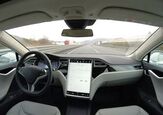















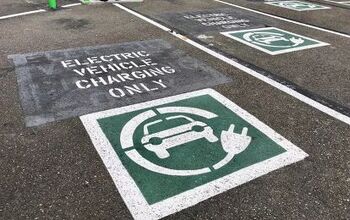
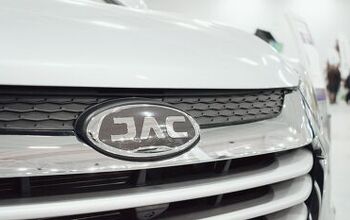
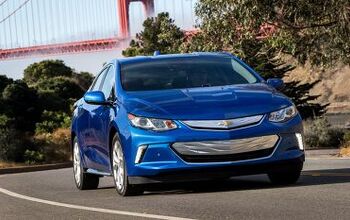
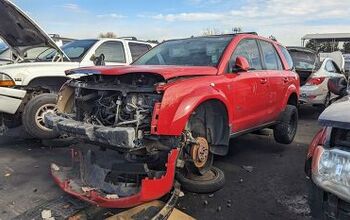


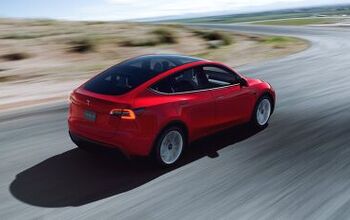
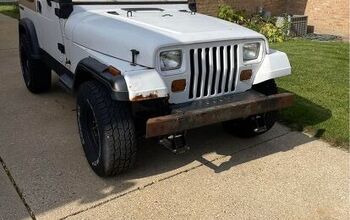


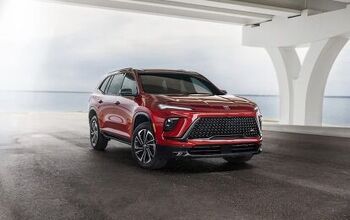
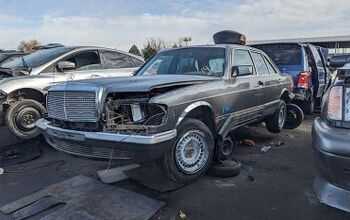
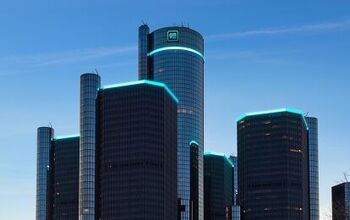


Comments
Join the conversation
Right, VWW12. If oil was bread, we'd buy it from other countries because our farmers disturb the soil when they plant wheat. Also, many people don't realize when they see "number of barrels of recoverable oil" that means "number of barrels of economically recoverable oil at a given price." In effect, the higher the price, the more oil is "there"! And if the price gets too low to make a profit extracting it, the well gets shut down. Regarding the current anti-Climategate spin (100,000 rpm), I understand it because I'm in the same predicament. I've invented a perpetual motion machine, but I can't tell anyone how it works because then they'll prove me wrong!
Is China no longer using leaded gas?